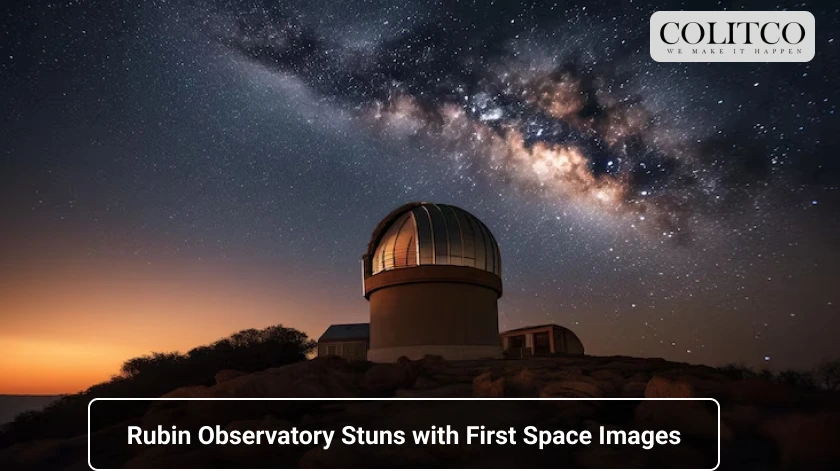Rubin Observatory Opens a New Chapter in Astronomy
The Rubin Observatory has released its first images, marking a major milestone in modern astronomy. The observatory, located in the Chilean Andes, began operations with a spectacular glimpse into space. The debut images include star-forming nebulas and distant galaxy clusters, offering a preview of what this decade-long project will uncover.
Scroll down to see the images ↓↓↓
These first images come ahead of the official unveiling on 24 June 2025. The event will stream globally, drawing attention from astronomers and space enthusiasts alike.
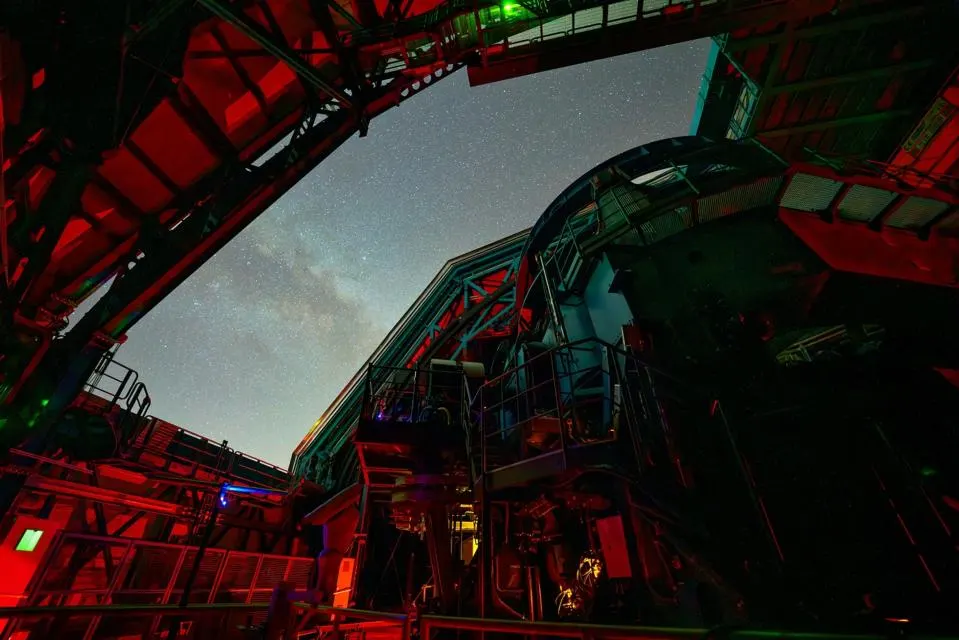
The telescope housed within the dome of the NSF-DOE Vera C. Rubin Observatory. [Image credit: NSF-DOE Vera C. Rubin Observatory/H. Stockebrand]
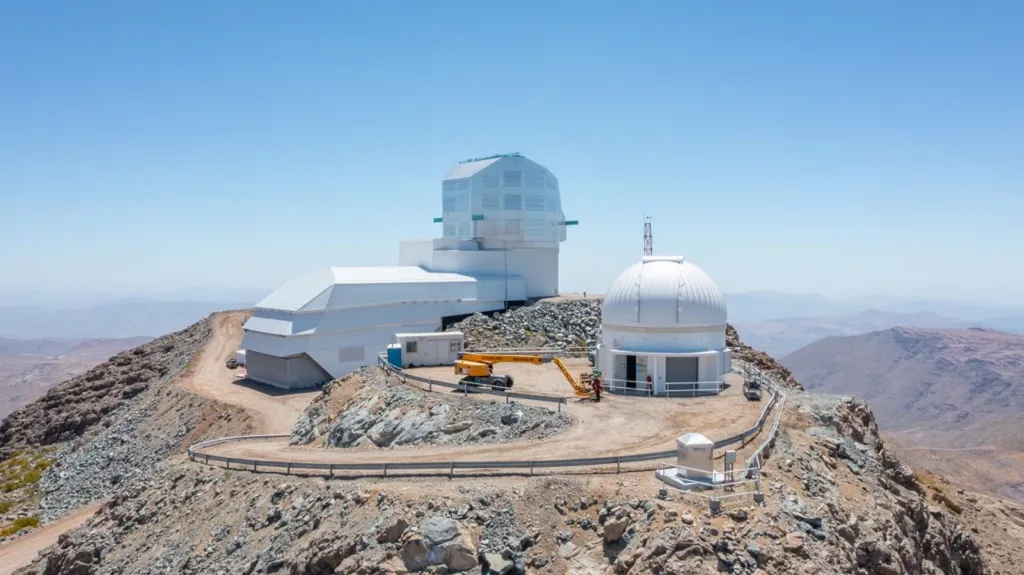
The Rubin Observatory and its Auxiliary Telescope are located at Cerro Pachón in Chile. [Credit: Rbin Observatory]
A Glimpse of the Nebulas: Trifid and Lagoon
The first major image from the Rubin Observatory features the Trifid and Lagoon nebulae. These massive clouds of interstellar gas and dust sit 5,200 and 9,000 light-years away in the constellation of Sagittarius. They are stellar nurseries, where baby stars are born.
The image is a composite made up of 678 separate observations, captured over seven hours. Astrophysicist Rachel Webster from the University of Melbourne said, “There’s just so much going on in each of these images.”
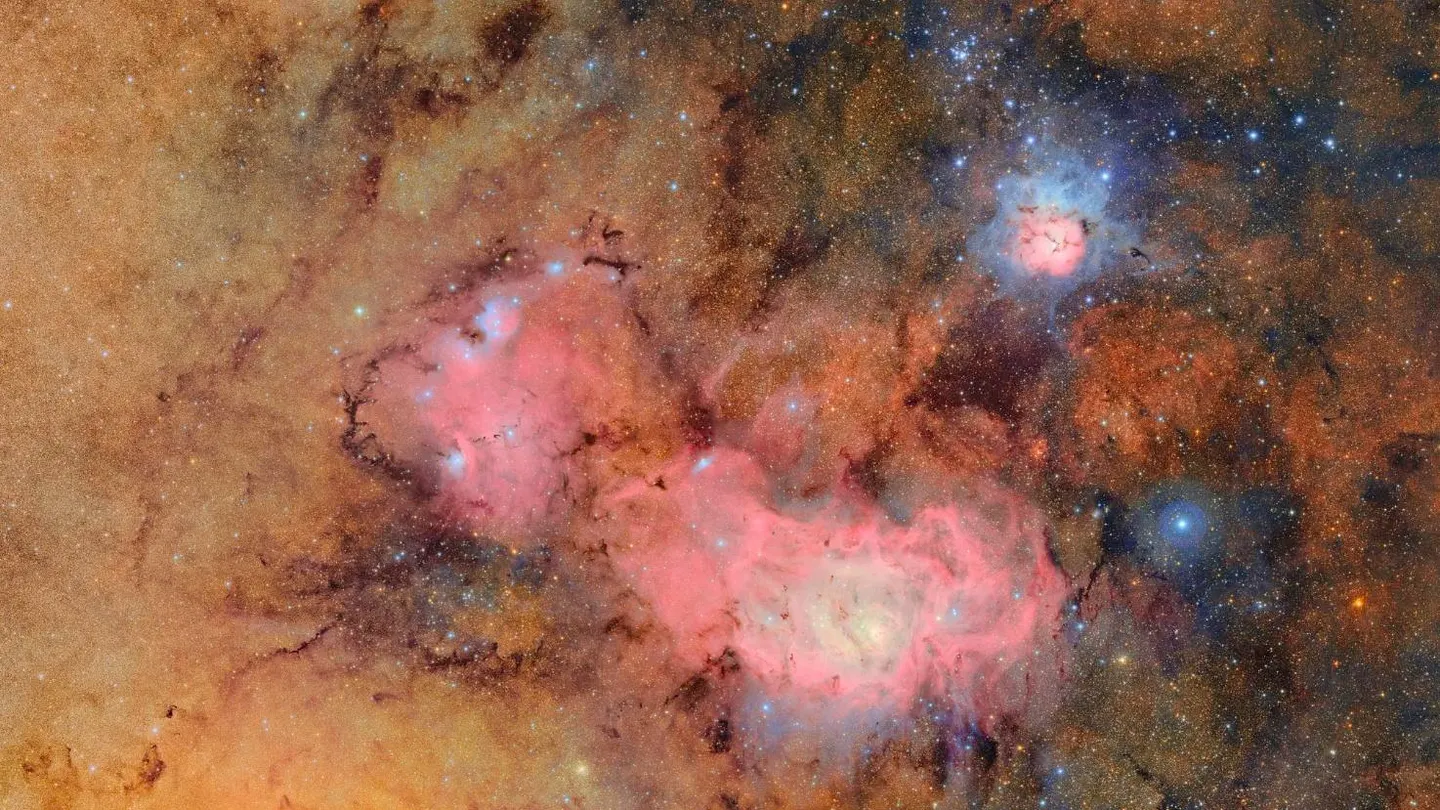
This image is a composite of 678 individual exposures captured by the NSF-DOE Vera C. Rubin Observatory during just over seven hours of observation. By layering multiple images, astronomers can reveal faint or hidden details, such as the gas and dust clouds forming the Trifid Nebula (top right) and the Lagoon Nebula—both located thousands of light-years from Earth. [Image credit: NSF-DOE Vera C. Rubin Observatory]
Professor Jonti Horner from the University of Southern Queensland praised the image’s clarity. “Even the furthest you zoom in, it’s pin-sharp,” he said.
The bright pink areas indicate hydrogen-rich regions, signifying hot, young stars. But it’s the orange dust surrounding these regions that stunned Professor Webster. “This is not surprising, but you don’t normally see this large scale,” she said.
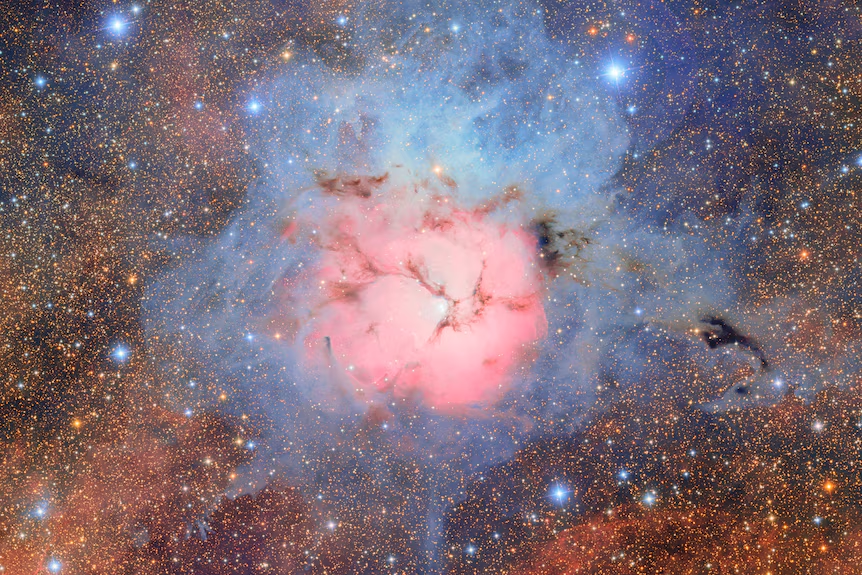
The Trifid Nebula lies in the constellation Sagittarius, occupying a region of the sky near the Milky Way’s centre. [Image credit: NSF-DOE Vera C. Rubin Observatory]
Rubin’s Edge: Detail Meets Scale
The Rubin Observatory doesn’t just capture detail—it does so across a wide field of view. Most telescopes have to choose between depth and width. Rubin delivers both.
Its 8.4-metre Simonyi Survey Telescope features a three-mirror design that enables it to view a field seven times the size of the full moon. Combined with a 3,200-megapixel camera—the largest ever used in astronomy—it will scan the entire southern sky every few nights.
Professor Webster highlighted this as a game-changer. “Here, we’ve got the depth of a big telescope with a very big field of view, and that’s very exciting,” she said.
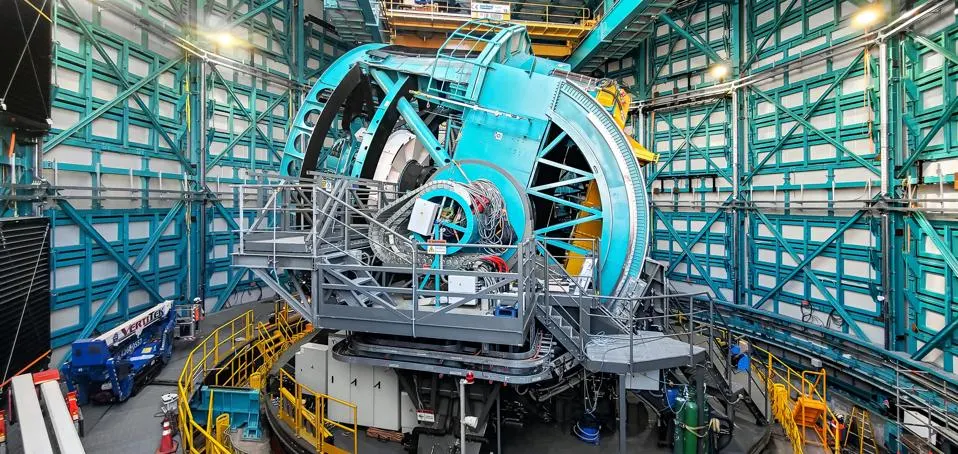
The telescope housed within the sealed dome of the NSF-DOE Vera C. Rubin Observatory. [Credit: NSF-DOE Vera C. Rubin Observatory]
The Virgo Cluster: Zooming Out on the Cosmos
The observatory also released two images of the Virgo Cluster, a massive collection of galaxies 55 million light-years away. These images reveal hundreds of galaxies and the cosmic structures that connect them.
Dr Tania Barone from Swinburne University pointed out that traditional telescopes can only focus on one galaxy at a time. “The James Webb Space Telescope would see maybe one of those galaxies,” she said, “but we get to see this whole zoomed out picture.”
Some of these galaxies appear to be merging, caught in what Dr Barone called a “cosmic dance.” Faint streams of stars stretch between galaxies, showing their gravitational interactions in real-time.
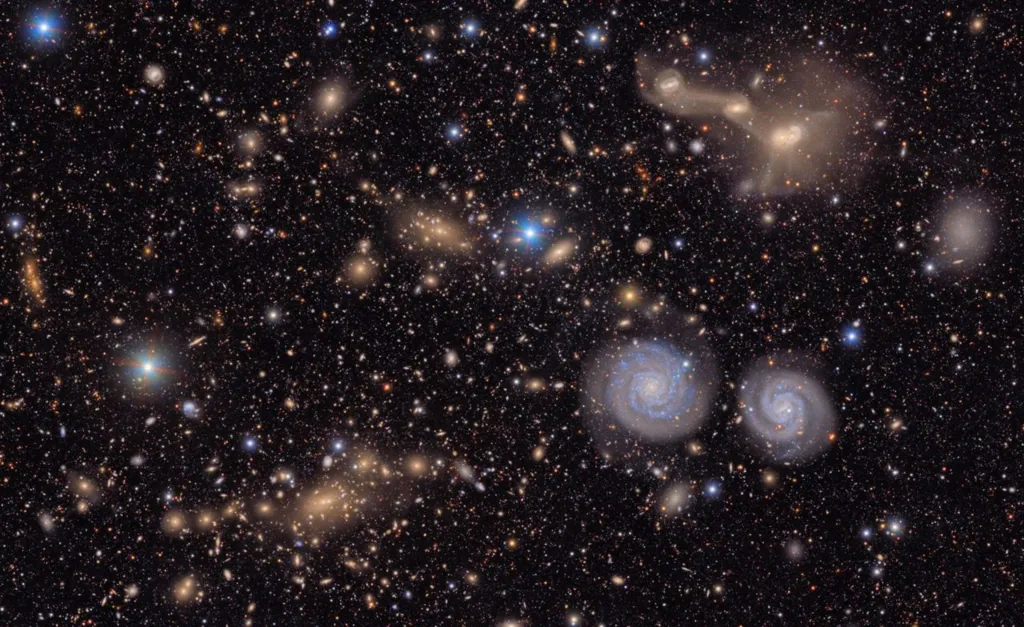
A massive group of galaxies, including spirals, forms the vast Virgo Cluster, which is roughly 100 billion times larger than the Milky Way. [Image credit: NSF-DOE Vera C. Rubin Observatory]
Surprising New Discoveries
Even among professionals, the images triggered wonder and curiosity. Professor Webster pointed to a bright gold object in one image and said, “I just look at it and I think: what on Earth is going on there?”
Astronomers noted the appearance of unusual galaxies—some without bright cores, possibly “crouching giants” that scientists have only speculated about before.
Data Like Never Before
The Rubin Observatory will capture an average of 20 terabytes of data each night once its full operations begin. In just its first year, it will gather more data than all previous observatories combined.
The observatory’s 10-year Legacy Survey of Space and Time (LSST) will document transient events like supernovas, rogue planets, and fast-moving asteroids.
Its unmatched ability to conduct time-domain astronomy—capturing changes in the night sky over time—will help scientists explore dark matter, dark energy, and the formation of stars and galaxies.
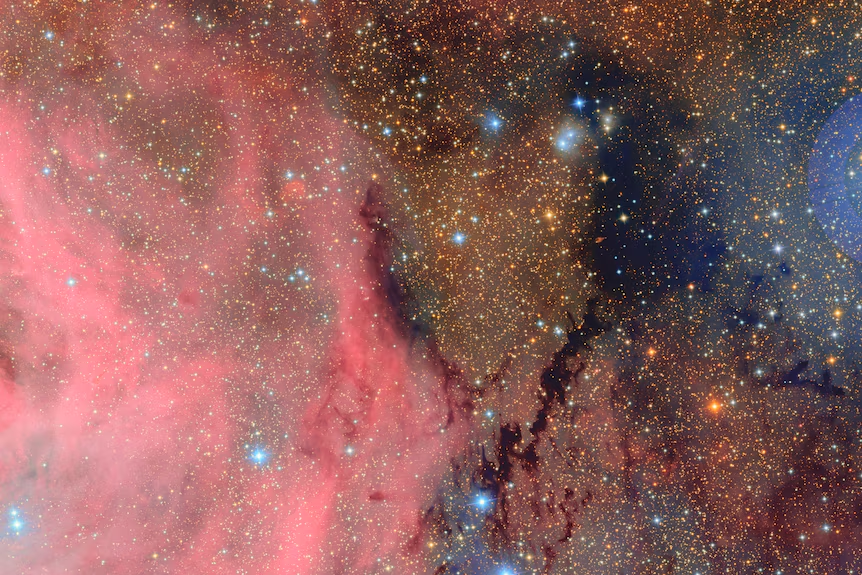
Amateur images can capture the bright pink hydrogen clouds in the Lagoon Nebula, but spotting the orange dust requires a powerful telescope. [Image credit: NSF-DOE Vera C. Rubin Observatory]
Honouring Vera Rubin
Named after Vera C. Rubin, the astronomer who confirmed the existence of dark matter, the observatory aims to build on her legacy. Brian Stone, acting director of the National Science Foundation, said, “Rubin Observatory will capture more information about our Universe than all optical telescopes throughout history combined.”
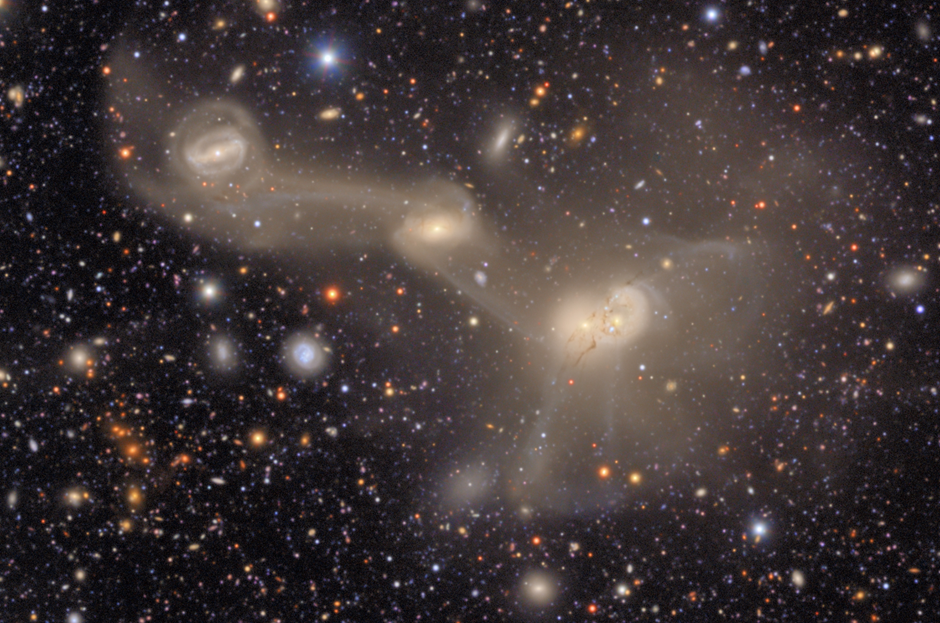
In this Rubin image, the star clusters connecting the merging galaxies appear far more distinctly, along with mysterious smudges that could be galaxies lacking clear central cores. [Credit: NSF-DOE Vera C. Rubin Observatory]
Looking Ahead
The official image release takes place at 1AM AEST on 24 June. Australians can watch the unveiling live or attend watch parties in cities like Sydney, Melbourne, and Perth.
As Professor Horner put it, “For the Solar System, this is almost like humanity opening its eyes for the first time.” He believes the Rubin Observatory will keep producing groundbreaking results for decades.
“If I’m still talking to journalists in 20 years’ time, we’ll still be talking about Vera Rubin,” he said.
Also Read: Weaver Nut Recalls Chocolate Nonpareils Nationwide Over Undeclared Milk Allergen Risk
With a powerful telescope, revolutionary camera, and a mission to map the Universe, the Rubin Observatory is just getting started.

